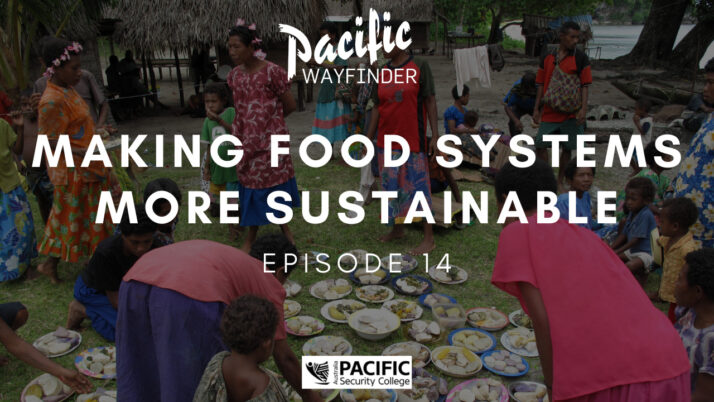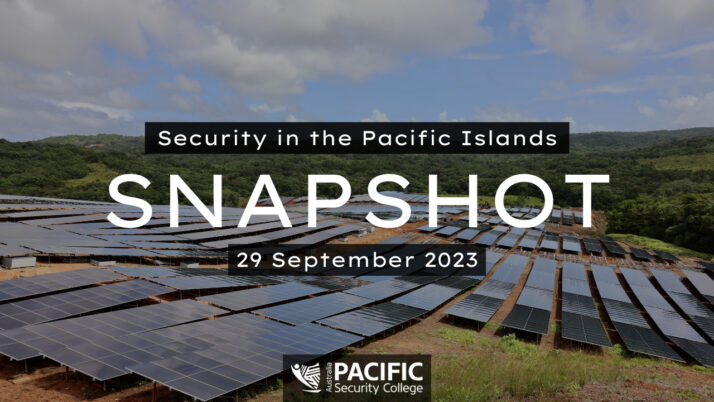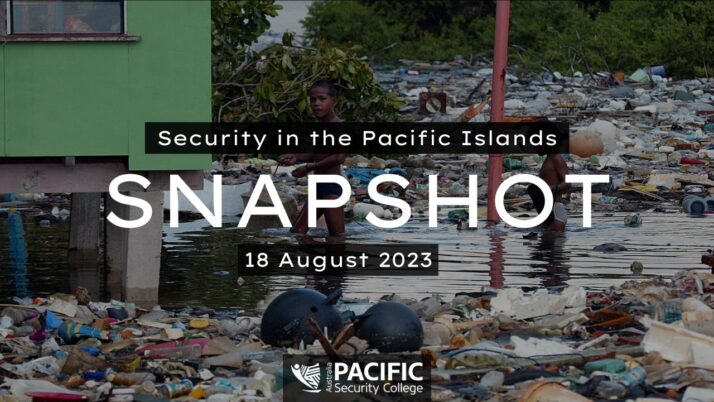Pacific Wayfinder: Making Pacific Food Systems More Sustainable

Photo: Ben Bohane
Policymakers must place greater importance on traditional Pacific food systems in order to achieve food security and improve health outcomes in the region, Eliorah Malifa writes.
The Pacific islands don’t just feed themselves – they have long helped feed the planet. The region provides half of the world’s tuna supply and large amounts of produce for neighbours like Australia and New Zealand. Historically, phosphate stripped from Pacific Island countries by colonial powers has been used to fertilise gardens and industrial agriculture overseas.
However, despite the huge role the region plays in feeding the rest of the world, many Pacific communities – particularly those in rural areas – are struggling with acute food insecurity. At the same time, Pacific urban areas are increasingly faced with major challenges from obesity, largely due to diets heavily reliant on unhealthy imported foods. Of the top 10 countries with the highest prevalence of obesity globally, nine are in the Pacific.
For years there has been a push to encourage healthier eating in the Pacific by going back to traditional and more nutritious foods. Supply chain disruptions and high prices may create an added spur to this development – and the need for locals to expand their gardens at home and in the community.
To discuss the issue of food sustainability and health in the region, Dr Viliamu Iese, Senior Lecturer at the University of the South Pacific’s Pacific Centre for Environment and Sustainable Development, and Karen Mapusua, Director of the Land Resources Division at the Secretariat of the Pacific Community (SPC), joined the Pacific Wayfinder podcast.
“It’s difficult for us to compete on price on the most basic things, with those imported foods,” said Mapusua.
“And, going on from there we have our NCD (non-communicable disease) crisis, where we’ve moved away from the foods that were our staples and were healthy and balanced and provided the nutrients we need, to what is increasingly really calorie dense food but of much lower quality.”
Both Mapusua and Dr Iese agree that while the Pacific makes a sizeable contribution to the global food system, the region encounters many challenges. Amidst the detrimental effects of climate change on local Pacific growth and supply, it is the imbalance in international food system structures that is of most concern.
“The global food system has been very unsustainable for many years,” Dr Iese said.
Parts of the region import up to 80 per cent of their food, creating vulnerability if there are any major shocks to the market, as seen with COVID-19. The disruptions in transport of food imports has meant that supply has been dramatically reduced, thus diminishing the availability of food in many Pacific islands.
As a result, many people have pivoted to growing gardens to supplement food supply, which provides the duel benefits of being both more ecologically sustainable and generally healthier.
However, Dr Iese noted that this practice is not realistic for many of those in urban areas, who do not have the space to create such gardens to supplement their intake.
Unfortunately, the reliance on the globally integrated systems for cheaper food options does not promote best practice for the region. Mapusua suggested that an amalgamated approach would be largely beneficial, looking to traditional food structures in the Pacific, and integrating them with modern-day food systems.
Despite the importance of cultural approaches to food in the Pacific, traditional practices were not a significant part of discussion at the United Nations Food Systems Summit in September. In the lead-up to the summit, which the SPC helped coordinate, the feeling in the region was that traditional techniques needed to be considered on an equal footing to newer approaches.
Mapusua noted that unfortunately this discussion did not occupy a large enough part of the global food systems picture, although there was a coalition created to monitor this.
Technology also plays a key role in the region’s attempts to maintain stability of food supply, according to Dr Iese, and recent developments in climate resilient crops have advanced the discussion and science around food supply in the face of climate change.
Overall, Dr Iese suggested that Pacific food systems require a more holistic and balanced approach. By addressing issues at a systemic level and looking to traditional structures, policymakers in the region will stand the best chance of improving population health for the region and ensuring its food supply.
Eliorah Malifa
This article is from our Pacific Wayfinder series, bringing you voices from the Pacific Island region. It is produced in conjunction with the Pacific Wayfinder podcast, produced by the Pacific Security College.
This article was originally posted on Policy Forum.
One comment on "Pacific Wayfinder: Making Pacific Food Systems More Sustainable"
Leave a Reply
More Stories

Security Snapshot - 29 Sep 2023
Pacific Security Snapshot | 29 September 2023
The security stories shaping the region ➣ 2nd United States-Pacific Islands Forum Summit ➣ Niue and Cook Islands forge diplomatic ties with United States ➣ Chinese navy vessel arrives in Papua New Guinea ➣ Pacific climate change advocacy at the United Nations ➣ El Niño is officially declared ➣ Fifteenth Pacific Health Ministers Meeting in…

Security Snapshot - 18 Aug 2023
Pacific Security Snapshot | 18 August 2023
The security stories shaping the region ➣ Pacific Resilience Facility endorsed at the Forum Economic Ministers Meeting ➣ The Pacific Climate Security Assessment Guide ➣ French President Macron visits Papua New Guinea and Vanuatu ➣ US Secretary of State and Secretary of Defence in the Pacific ➣ Bougainville eruption leaves 8,000 displaced Climate Security Ministers…







Thank you a lot for sharing this with all of us you actually realize what you’re speaking about!
Bookmarked. Please additionally seek advice from
my web site =). We could have a link change contract among us